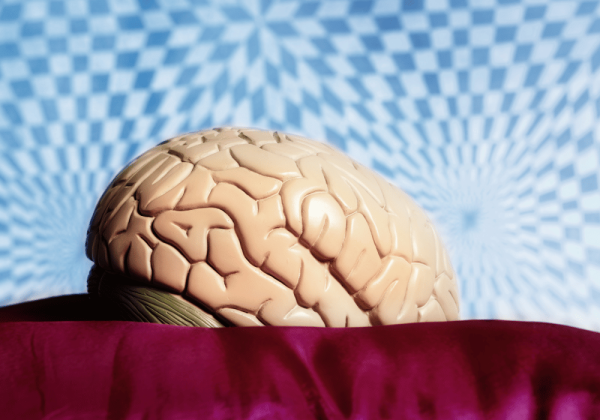The word ‘psychedelic’ often evokes images of the counterculture movement of the 1960s. However, the scientific community has taken a renewed interest in these substances for their potential therapeutic benefits. Psychedelic therapy involves the use of substances like psilocybin (found in magic mushrooms) and LSD to treat various mental health conditions. This blog post aims to explore the fascinating neuroscience behind psychedelic therapy and how it affects the brain.
Understanding the Neuroscience of Psychedelics
 How Do Psychedelics Work on the Brain?
How Do Psychedelics Work on the Brain?
Psychedelics primarily interact with serotonin receptors in the brain. Serotonin is a neurotransmitter that plays a crucial role in mood regulation, cognition, and perception. When psychedelics bind to these receptors, they alter the normal flow of neurotransmission, leading to changes in perception, mood, and thought processes.
Neuroplasticity and Psychedelics
One of the most intriguing aspects of psychedelics is their ability to promote neuroplasticity—the brain’s ability to reorganize itself by forming new neural connections. Research has shown that substances like psilocybin can stimulate the growth of new neurons and synapses, potentially offering long-lasting therapeutic benefits.
Default Mode Network (DMN)
The Default Mode Network (DMN) is a network of brain regions that are active when the mind is at rest and not focused on the outside world. Psychedelics have been found to temporarily ‘disrupt’ the DMN, leading to a state of ‘ego dissolution.’ This can help patients gain new perspectives and break free from negative thought patterns.
The Effects of Psychedelics on Mental Health
Clinical Studies
Numerous clinical studies have demonstrated the effectiveness of psychedelic therapy in treating conditions like depression, anxiety, and PTSD. For example, a study published in the Journal of Psychopharmacology found that a single dose of psilocybin significantly reduced symptoms of depression in patients for up to six months.
Real-World Cases
Real-world cases also provide compelling evidence for the benefits of psychedelic therapy. Patients who have undergone this form of treatment often report profound changes in their mental health, describing it as a life-changing experience that offers deep emotional and psychological healing.
Mechanisms of Action
The therapeutic effects of psychedelics are believed to arise from their ability to ‘reset’ the brain’s neural circuitry. By disrupting the DMN and promoting neuroplasticity, psychedelics can help break the cycle of negative thought patterns and facilitate emotional release.
Safety and Legal Considerations
 Current Legal Landscape
Current Legal Landscape
The legal status of psychedelics varies widely across the globe. In some countries, they are strictly prohibited, while others have decriminalized or even legalized their use for medical purposes. Understanding the legal landscape is crucial for anyone considering psychedelic therapy.
Safety Protocols
While psychedelics have shown promise in treating mental health conditions, it’s essential to approach their use with caution. Professional guidance, proper dosing, and a controlled environment are crucial to ensure safety and effectiveness.
Potential Risks
Potential risks include psychological distress, ‘bad trips,’ and exacerbation of underlying mental health issues. Therefore, it is vital to conduct thorough screenings and provide adequate support throughout the therapy process.
Exploring the Potential of Psychedelic Therapy in Mainstream Mental Health Care
Integration into Conventional Therapies
Psychedelic therapy is gradually gaining acceptance in mainstream mental health care. Integrating psychedelics with conventional treatments like cognitive-behavioral therapy (CBT) could offer a more comprehensive approach to mental health.
Future Research
Ongoing research aims to better understand the mechanisms behind psychedelic therapy and identify the most effective treatment protocols. Studies are also exploring the potential of new psychedelic compounds, such as MDMA and DMT, for therapeutic use.
Public Perception
Public perception of psychedelics is slowly shifting from viewing them as recreational drugs to recognizing their potential medical benefits. Increased awareness and education will be crucial in changing societal attitudes and facilitating broader acceptance.
Psychedelic therapy holds immense promise for revolutionizing mental health treatment. Its ability to promote neuroplasticity, disrupt the DMN, and offer profound emotional and psychological healing makes it a powerful tool in the fight against mental health disorders. By understanding the neuroscience behind these substances and addressing safety and legal considerations, we can unlock their full potential and pave the way for a new era in mental health care. For those interested in exploring further, numerous resources and clinical trials are available to guide you on this fascinating journey.
